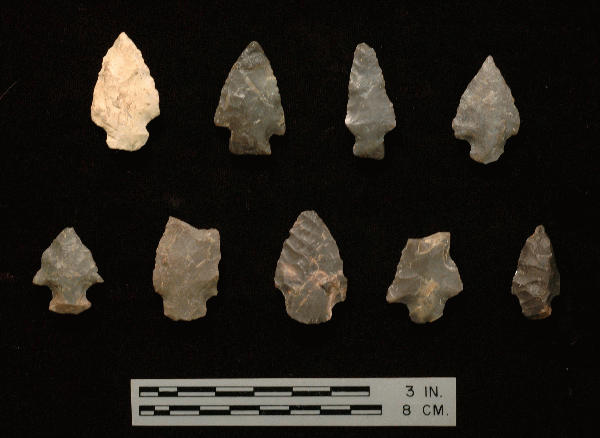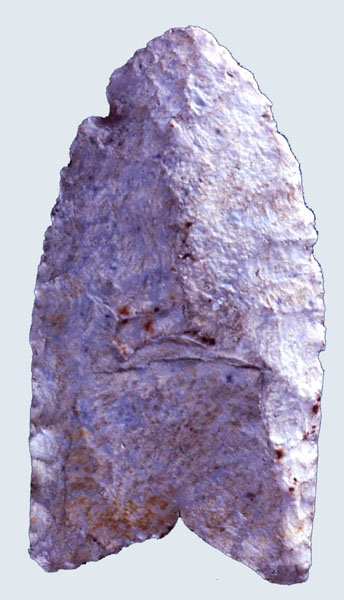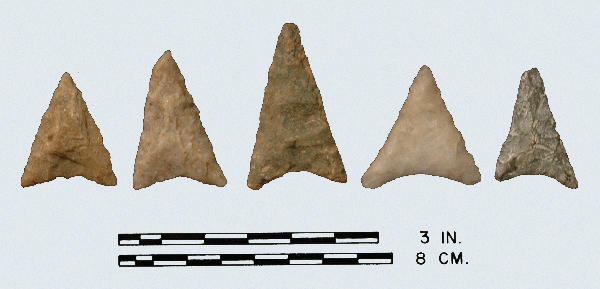
Cedar Creek: Top Row: rhyolite, chert, chert, chert; Bottom Row: all chert.
Type Middle-Archaic
Defining Attributes
The Cedar Creek point has a triangular or lanceolate blade with excurvate edges. Broad corner notches create a narrow or broad straight or expanding stem. The base may be straight, convex, or rounded bulb-like base.
Chronology
The Cedar Creek point dates to the late Middle Archaic period. Benthall (1979) obtained a radiocarbon date of 3740 +/- 260 BCE from a feature related to this point type at the Daugherty’s Cave Site in Russell County, Virginia.
Description
- Blade: The blade is triangular or lanceolate and blade edges are usually excurvate.
- Base: Broad corner notches create a narrow to broad expanding stem. The base may be straight, convex, or rounded and bulb-like. Basal thinning may be poorly executed or well pronounced.
- Size: Length ranges from 30 to 40 mm with an average of 35 mm. Width ranges from 26 to 28 mm with an average of 27 mm. Thickness ranges from 4 to 6 mm with an average of 5 mm.
- Technique of manufacture:
Discussion
Benthall recognized that the Cedar Creek point type expresses the generalized late Middle Archaic medium-sized stemmed point horizon. Benthall (1979) included a wide variety of stemmed shapes and divided the Cedar Creek point type into two varieties. The type is not described elsewhere in the literature, but is included here because of the dated stratigraphic context for the points at Daugherty’s Cave.
Defined in Literature
This type was originally defined by Benthall (1979) based on points recovered from the Daugherty’s Cave Site in Russell County, Virginia.
References



